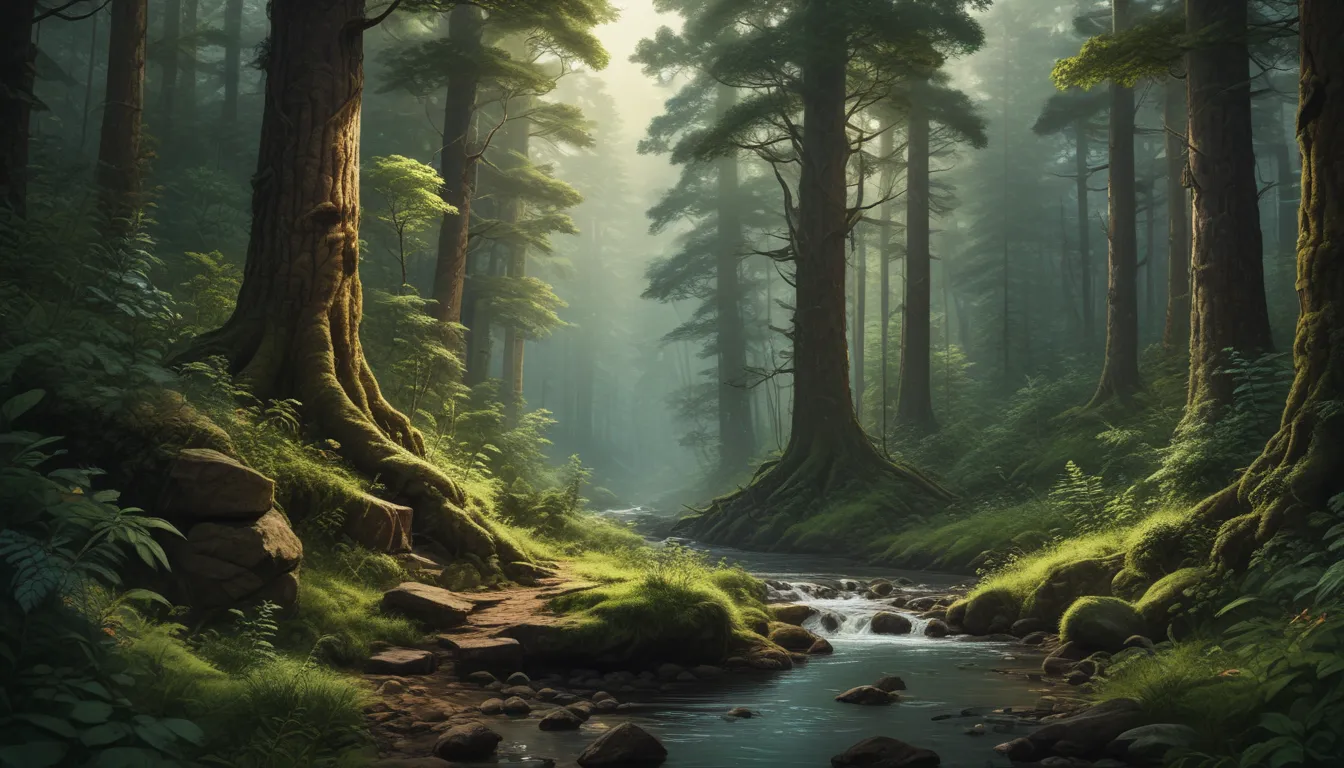The pictures we use in our articles might not show exactly what the words say. We choose these pictures to make you interested in reading more. The pictures work together with the words but don’t take their place. The words still tell you the important facts.
Forests are not just a collection of trees; they are vibrant ecosystems that support a multitude of life forms and provide invaluable benefits to the planet. Covering approximately 30% of the Earth's land area, forests are crucial for biodiversity, climate regulation, and human well-being. In this article, we will explore 20 intriguing facts about forests that highlight their importance and diversity, shedding light on their essential role in our ecosystem.
The World of Forests
Forests are vital ecosystems that contribute to the planet's biodiversity and play a significant role in producing oxygen through photosynthesis. They cover about 30% of the Earth's land surface, providing habitat for a diverse range of plants and animals.
The Enigmatic Amazon Rainforest
The Amazon Rainforest, the largest tropical rainforest globally, spans over 5.5 million square kilometers and is home to an astonishing array of plant and animal species. Its rich biodiversity and unique ecosystems make it a focal point for conservation efforts.
The Environmental Impact of Forests
Forests act as natural carbon sinks, absorbing carbon dioxide and helping mitigate climate change by storing carbon through the process of photosynthesis. They also provide habitat for over 80% of the Earth's terrestrial biodiversity.
The Taiga: The World’s Largest Land Biome
The Taiga, also known as the boreal forest, is the world's largest land biome, stretching across North America, Europe, and Asia. Characterized by coniferous forests and cold climates, the Taiga is a critical ecosystem for numerous plant and animal species.
The Benefits of Forests
Forests offer a multitude of benefits, from watershed protection and freshwater resource maintenance to recreational activities for people. It is essential to protect and sustainably manage forests to preserve their invaluable contributions to the ecosystem.
Forest Bathing: Nature’s Healing Touch
Forest bathing, or spending time in nature, has been scientifically proven to reduce stress and improve overall well-being. The calming effects of being surrounded by trees and natural landscapes provide a therapeutic experience for the mind and body.
Conservation and Management
Forest stewardship is crucial for promoting responsible forest management practices. Organizations like the Forest Stewardship Council (FSC) set standards for sustainable logging practices, ensuring the long-term health and preservation of forests for future generations.
The Role of Forest Fires
While destructive in the short term, forest fires play a vital role in forest ecosystem dynamics by contributing to seed germination, nutrient recycling, and the renewal of forest ecosystems. They are a natural part of the forest's life cycle.
The Cultural Significance of Forests
Forests hold cultural significance for many communities worldwide, providing resources for livelihoods, traditional knowledge, and spiritual practices. They also inspire artists, writers, and musicians with their beauty and tranquility.
Ancient Trees and Ecosystems
The world's oldest known tree, Methuselah, is estimated to be over 5,000 years old and resides in the White Mountains of California. Ancient forests like the Daintree Rainforest in Australia, dating back over 180 million years, harbor unique ecosystems and endemic species.
Conclusion: Preserving the Treasures of Forests
In conclusion, forests are not merely landscapes but intricate ecosystems that sustain life on Earth. Understanding their importance and taking steps to preserve and protect them are essential for ensuring a sustainable future for generations to come. By valuing and conserving forests, we contribute to the well-being of the planet and all its inhabitants.
FAQs: Exploring Forests
Q: How many types of forests are there?
A: There are several types of forests, including tropical rainforests, temperate forests, boreal forests, and deciduous forests, each with its unique characteristics and biodiversity.
Q: What is the largest forest in the world?
A: The Amazon Rainforest, located in South America, is the largest forest globally, covering an area of approximately 5.5 million square kilometers.
Q: How do forests contribute to climate regulation?
A: Forests play a vital role in regulating climate by absorbing carbon dioxide through photosynthesis and releasing oxygen, acting as carbon sinks to mitigate climate change effects.
Q: What are some benefits of forests?
A: Forests provide numerous benefits, including carbon sequestration, water filtration, erosion prevention, timber and non-timber products, biodiversity conservation, and recreational opportunities.
Q: How can I help conserve forests?
A: You can contribute to forest conservation by supporting sustainable forestry practices, reducing your carbon footprint, participating in reforestation efforts, and advocating for policies that protect and restore forests.
Join Us in Exploring the Wonders of Forests
At Wallpapers.com, our dedication to delivering trustworthy and engaging content about forests reflects our commitment to quality and authenticity. Each fact shared on our site comes from real users like you, ensuring a wealth of diverse insights and information. Explore and learn with us as we uncover the hidden wonders and treasures of forests, contributing to a better understanding and appreciation of these vital ecosystems.






